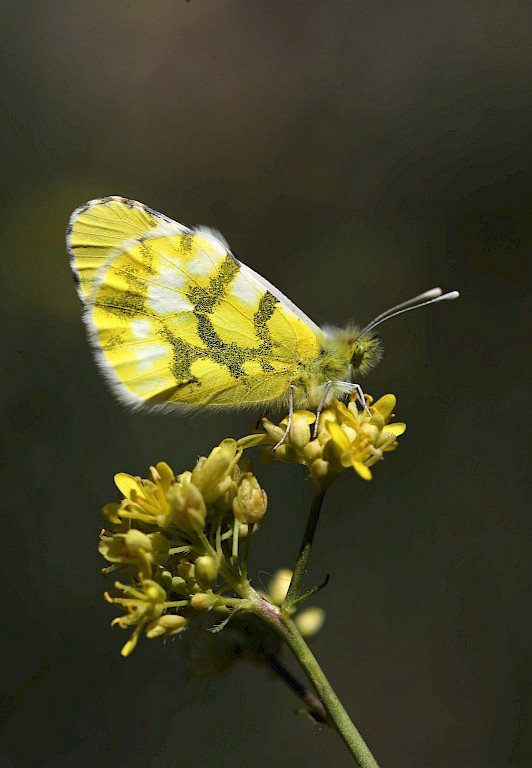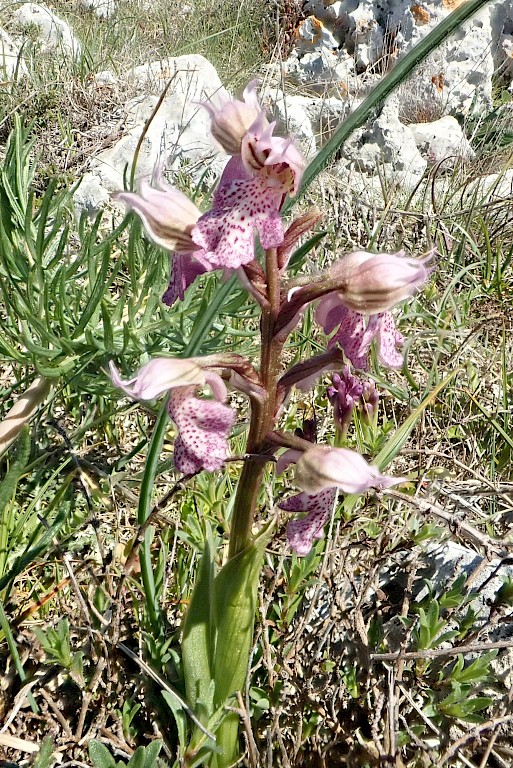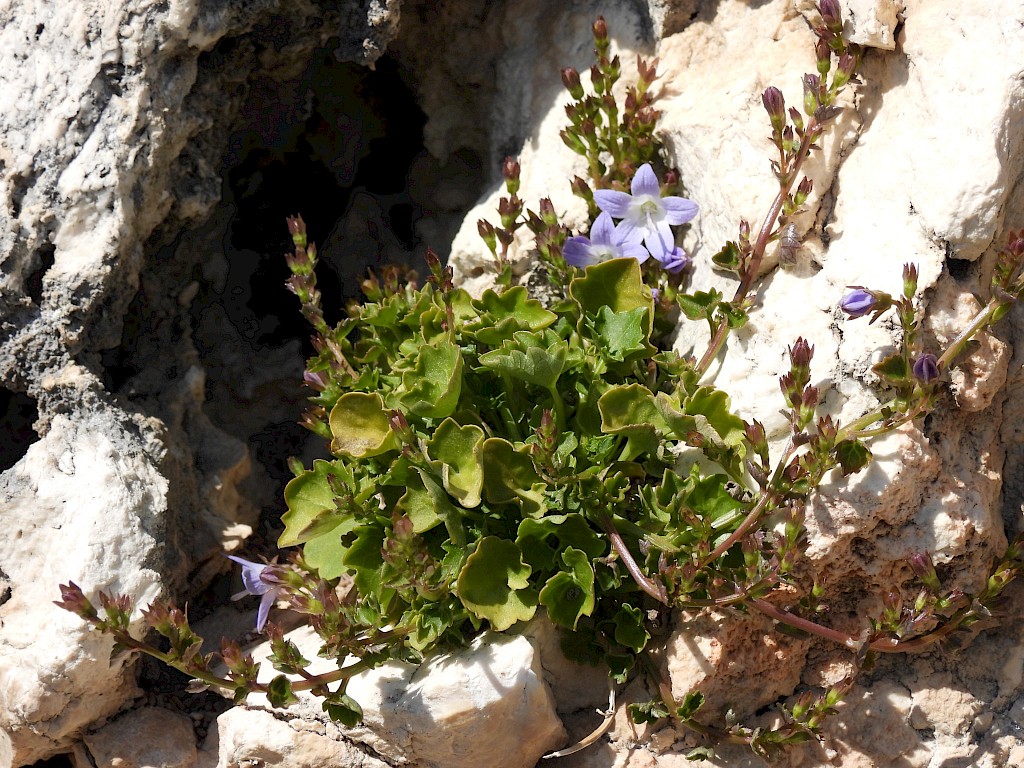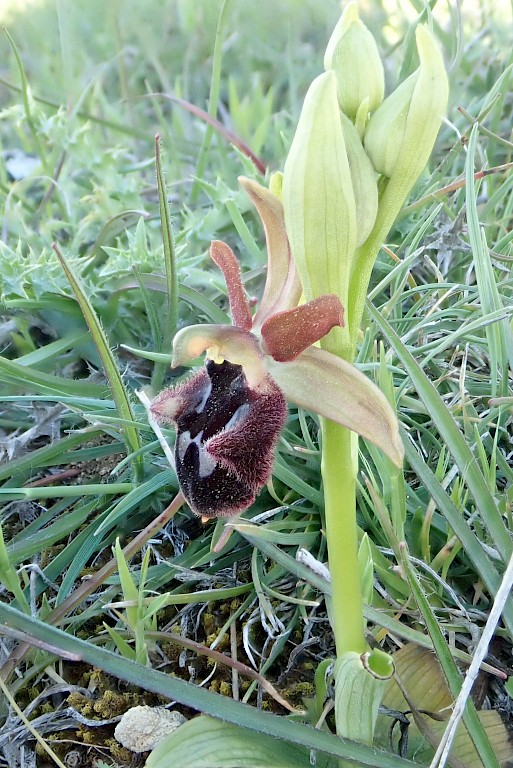As winter starts to release its grip on Europe, April in the Gargano can still suffer chill winds and wintery showers, but mainly it is warm and sunny compared to the UK. Certainly the orchids will know it’s spring - by the time of our visit most of the orchids will already be in flower, from the very early flowering Giant Orchid Himantoglossum robertianum to the diminutive Small-flowered Tongue-orchid Serapias parviflora and, of course, the jewels for which the Gargano is justly renowned, the Ophrys bee orchids.
The Gargano Peninsula’s intricate mosaic of open limestone pavement, deep gorges, extensive woodlands and light touch, traditional agriculture provide a refuge for numerous species of plants. Much of it is included within the 120,000 hectares of the Parco Nazionale del Gargano and is home to more than 50 species of orchid (depending on taxonomy), and we will hope to find in the region of 30-40 of those during our time here, most of them in flower. The peninsula’s great claim to fame is having the greatest concentration of wild orchid species in Europe, including many colourful and confusing hybrids in addition over 2,000 species of non-orchidaceous plants in this relatively small area.
From the airport in the regional city of Bari we will travel along the coast on our way to our first accommodation at the beautiful hilltop settlement of Monte Sant'Angelo. The coastal lagoons and dunes along the way will offer the opportunity for our first look at the flora of the area, and there are often interesting migrant waders on the lagoons. Here, in the tall, herbaceous vegetation, we will search for the spectacular Giant Orchid, a very early flowering species, but hopefully we may still find some in nice condition. The dunes here will give us one of our few opportunities to look at typical Mediterranean coastal flora such as Sea Knotgrass Polygonum maritimum and Shore Medick Medicago littoralis.
For the first part of the week we will explore the southwestern part of the Gargano. This area is largely rocky calcareous pasture mixed with scrub where the grassland is decorated with patches of bright Pink Butterfly Orchids Anacamptis papilionacea, the stunning Sawfly Orchid Ophrys tenthredinifera, one of the best of the genus, and sprawling clumps of the deep blue Dyer's Alkanet Alkanna tinctoria. Near the ancient monastery of Santa Maria di Pulsano a spectacular gorge is home to the range restricted Adriatic Bellflower Campanula garganica and, clinging tenaciously to rocky cliffs, Hairy Golden-Drop Onosma echioides. Here we may come across endemic forms of Early Spider Orchid Ophrys sphegodes sipontensis and O. s. passionis both of which, depending on your taxonomic inclination, are sometimes given full species status. The abundant flowers here attract butterflies like Scarce Swallowtail Iphiclides podalirius, Eastern Bath White Pontia edusa, and Adonis and Chapman's Blues Polyommatus bellargus and P. thersites. The bright orange flowers of Field Marigold Calendula arvensis are a favourite for the tiny colourful beefly Usia versicolor.
A visit to the extensive woodlands of Bosco Quarto can be very productive. On the way we will stop to admire fields full of bright yellow Wild Tulip Tulipa sylvestris. In and around the woodlands we may find the endemic Argolian Bee Orchid Ophrys argolica biscutella, Hollowroot Corydalis cava, the spectacular endemic Two-flowered Iris Iris bicapitata, and the beautiful Viola merxmuelleri, another endemic of SE Italy. Near patches of Aristolochia lutea we will keep a sharp lookout for the stunning Southern Festoon Zerynthia polyxena, and in shady areas the delicate Wood White Leptidea sinapis can often be seen.
On the limestone pavement around Monte Sacro numerous orchids can be found such as Ophrys × flavicans, Sparse-flowered Orchid Orchis pauciflora, Four-spotted Orchid Orchis quadripunctata, and Bumblebee Orchid Ophrys bombyliflora. On the nearby cliff-tops some very interesting knapweeds can be found notably the very rare and range restricted Centaurea subtilis, together with attractive patches of Crimson Pea Lathyrus clymenum, Lomelosia cretica, and a handful of Poet's Cassia Osyris alba shrubs.
En route to our second hotel in the pretty fishing village of Peschici we pass through the extensive Foresta Umbra where we will stop to enjoy large drifts of Apennine Lungwort Pulmonaria hirta, Spring Sowbread Cyclamen repandum, sweetly perfumed Common Peony Paeonia mascula, and Provence Orchid Orchis provincialis. Further roadside stops along the way will provide many more colourful plants, including Small-flowered Tongue-orchid, Bitter Blue Lupin Lupinus micranthus, and the deep red Winged Pea Lotus tetragonolobus.
Down on the coast Alpine Swifts can often be seen around the cliffs while Scopoli’s Shearwaters feed on baitfish out to sea. Along the cliff tops large shrubs of Jupiter's-Beard Anthyllis barba-jovis are in full flower, while Pink Hawk's-beard Crepis rubra, Boar Thistle Galactites tomentosus, Sicilian Snapdragon Antirrhinum siculum, and White Henbane Hyoscyamus albus decorate the rocky slopes.
The orchards of the area harbour colonies of the spectacular Lady Orchid Orchis purpurea growing alongside Greater Honeywort Cerinthe major and Pink Garlic Allium trifoliatum. Amongst other orchid treasures we’ll be hoping to come across the Italian endemic Ophrys holosericea subsp. parvimaculata growing with Purple Broad Vetch Vicia narbonensis and Blue Hound's Tongue Cynoglossum creticum.
The area around Lago di Verano is comparatively verdant compared with the more arid limestone pavement areas we explored earlier in the week, and here we should find a suite of new, enticing Serapias tongue-orchid and Ophrys bee-orchid species to lose ourselves in. As ever with all of our tours, we take particular care to tread lightly in the landscape, and take only photos and happy memories with us when we leave.
































